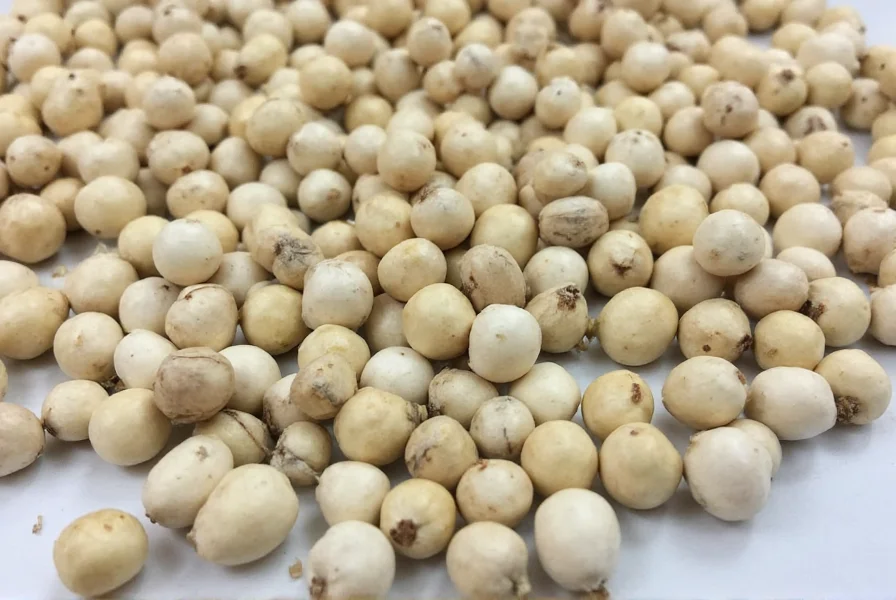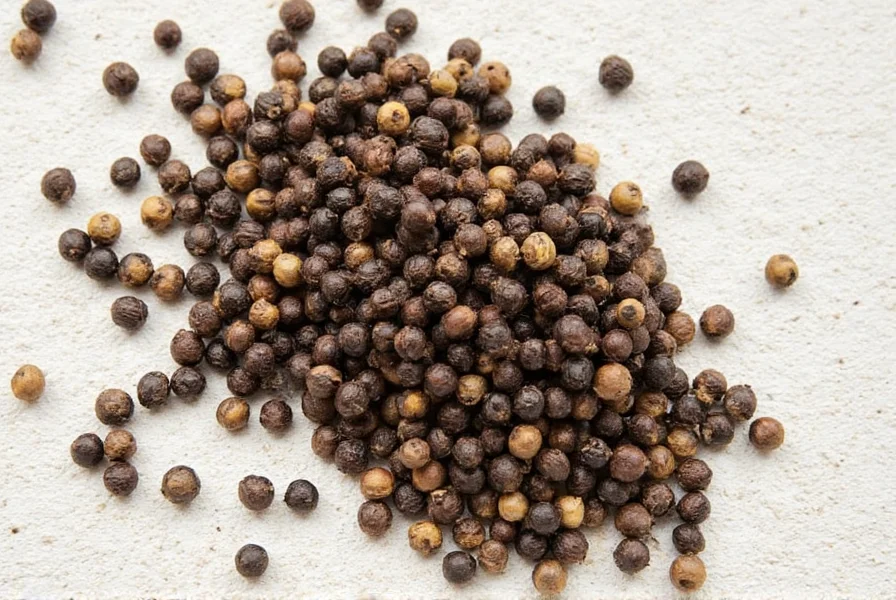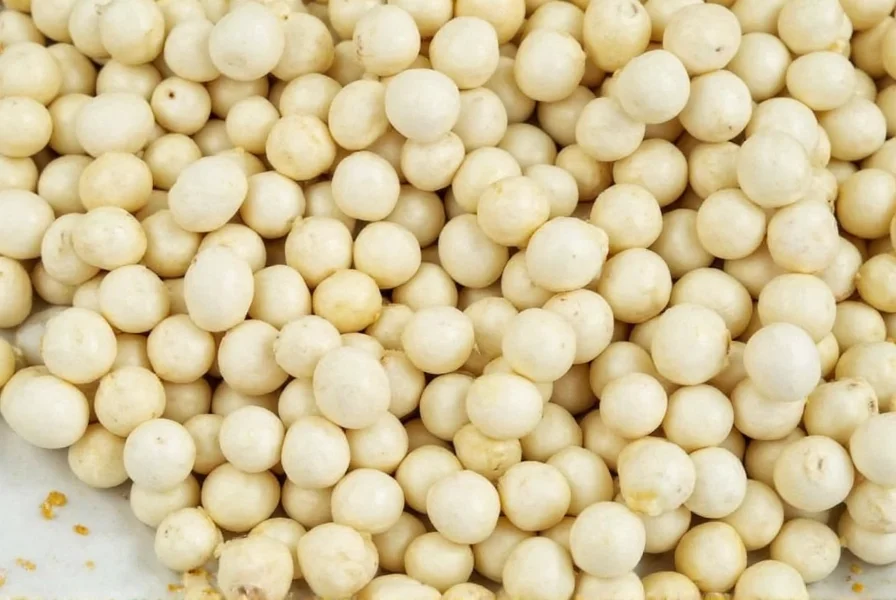White Pepper: Spicy or Just Subtle Heat? A Tasty Truth Revealed!
Table of Contents
- Introduction
- What is White Pepper?
- The Spice Factor: Is White Pepper Spicy?
- White vs. Black Pepper – What's the Real Difference?
- Culinary Uses: When to Use White Pepper
- Buying Guide: Choosing the Best White Pepper
- Conclusion
Introduction
If you've ever looked at your spice rack and wondered, "Is white pepper spicy?", you're not alone. This common kitchen question pops up more often than you might think. While black pepper reigns supreme as the king of spices, its paler cousin — white pepper — tends to fly under the radar.

In this article, we’ll dive into the flavor profile, heat level, and uses of white pepper. Whether you're a seasoned chef or a weekend cook looking to elevate your dishes, this guide will help you understand whether white pepper brings the burn or just a gentle warmth.
What is White Pepper?
White pepper comes from the same plant as black pepper (Piper nigrum), but it's processed differently. While black pepper is made from dried, unripe berries that are cooked and sun-dried, white pepper undergoes a longer soaking process to remove the outer layer (the pericarp), leaving behind the inner seed.

Key Differences in Production:
| Type | Processing Method | Flavor Notes |
|---|---|---|
| Black Pepper | Dried unripe fruit with skin on | Earthy, bold, sharp |
| White Pepper | Ripe fruit soaked and stripped of outer layer | Mellow, woody, slightly fermented |
The Spice Factor: Is White Pepper Spicy?
This is the million-dollar question! To answer it simply: yes, white pepper is spicy — but not in the fiery chili way. The heat in both black and white pepper comes from a compound called piperine, which gives that tingling sensation on your tongue and nose.
Spice Level Compared to Other Peppers
- White Pepper: Mild spiciness with earthy undertones
- Black Pepper: Slightly more pungent and sharper
- Cayenne / Jalapeño: Much hotter, due to capsaicin
So while it doesn’t set your mouth on fire like chili peppers, white pepper does deliver a subtle, lingering heat that enhances flavors without overwhelming them. Think of it as the quiet friend who still makes a big impression when they speak up.
White vs. Black Pepper – What's the Real Difference?
It’s easy to assume they’re interchangeable, but here’s where things get interesting:
| Characteristic | White Pepper | Black Pepper |
|---|---|---|
| Origin | Ripe berries, soaked and peeled | Unripe berries, dried whole |
| Heat Level | Mild, lingering | Bolder, sharper bite |
| Flavor Profile | Earthy, musty, slightly fermented | Complex, floral, fruity |
| Appearance | Pale yellow to white | Dark brown to black |
| Best Use | Light-colored sauces, soups, creamy dishes | Versatile; most savory dishes |
Culinary Uses: When to Use White Pepper
White pepper shines in dishes where you want a hint of heat without visual disruption or overpowering flavor. Here are some classic situations where it really earns its place in your spice drawer:

- Creamy sauces and mashed potatoes: Its mild heat complements dairy-based dishes without clashing.
- Soups and stews: Especially lighter ones like potato leek or chicken noodle, where you don't want dark specks marring the look.
- Asian cuisine: Many Chinese, Thai, and Vietnamese recipes use white pepper for a background warmth (think hot and sour soup).
- Egg dishes: Scrambled eggs, omelets, and quiches benefit from its soft spice.
- Brines and marinades: Great for adding depth without strong aromatics.
Pro Tip:
Grind it fresh over steamed vegetables, risottos, or grilled fish for a subtle kick that elevates everyday meals.
Buying Guide: Choosing the Best White Pepper
Not all white pepper is created equal. Here’s what to look for when shopping:
Types of White Pepper Available
- Whole grains: Ideal for grinding fresh at home. Lasts longer and retains more flavor.
- Pre-ground: Convenient but can lose potency faster.
Things to Look For
| Feature | Description |
|---|---|
| Aroma | Should smell warm and slightly musky |
| Color | Pale yellow to off-white; avoid overly dark batches |
| Source | Look for reputable origins like Vietnam, India, or Indonesia |
| Container | Opaque glass or tin is best to protect from light and moisture |
Recommended Brands
- Spice Islands White Pepper: Organic and consistently fresh tasting.
- Penzeys White Pepper: Strong aroma, great for culinary enthusiasts.
- Frontier Co-op White Pepper: Affordable and available in both whole and ground forms.
Storage Tips
- Keep in a cool, dark cupboard away from humidity
- Use within 6 months for pre-ground, 1–2 years for whole peppercorns
- Avoid placing near the stove or sink
Conclusion
So, is white pepper spicy? Absolutely — but not in the way chili heads are used to. It offers a subtler, more refined heat that blends beautifully into a variety of dishes without stealing the spotlight. From creamy pastas to delicate broths, white pepper is an underrated gem worth rediscovering.
Whether you're experimenting with global cuisines or just trying to add a touch of warmth to your favorite recipes, give white pepper a chance to impress. You might find it becomes a staple in your kitchen — quietly enhancing flavors one dish at a time.










 浙公网安备
33010002000092号
浙公网安备
33010002000092号 浙B2-20120091-4
浙B2-20120091-4